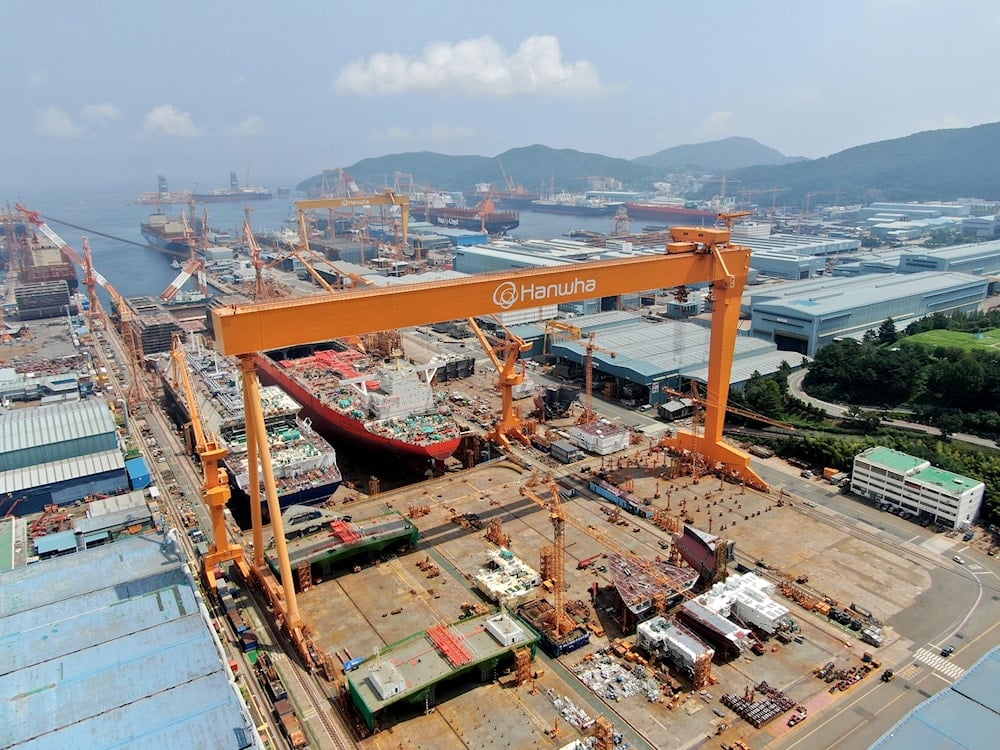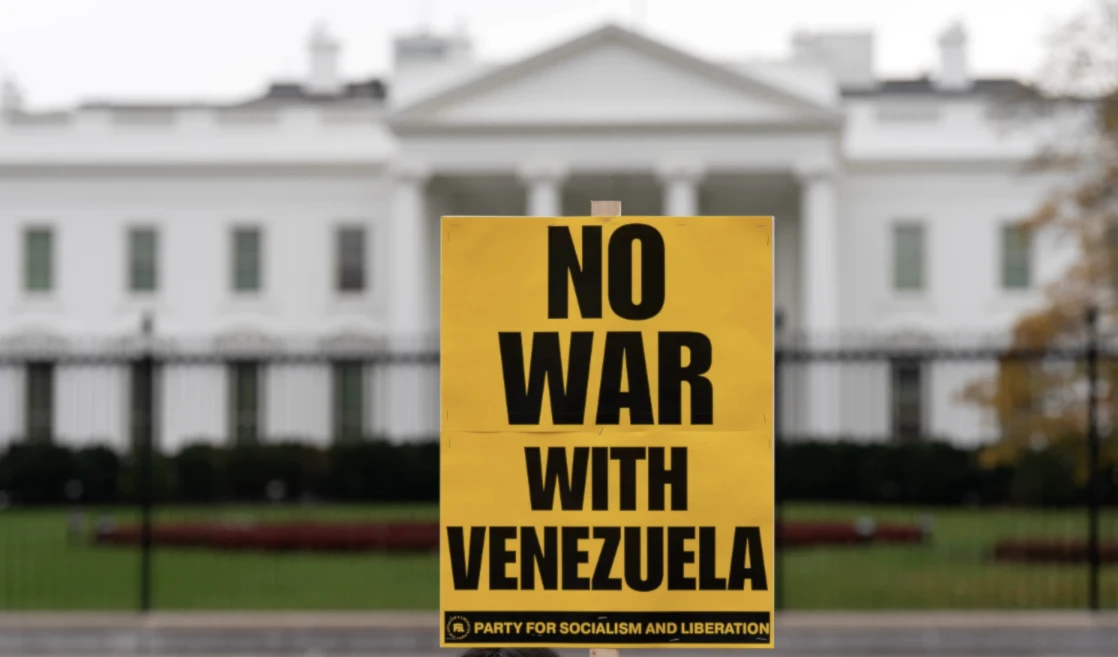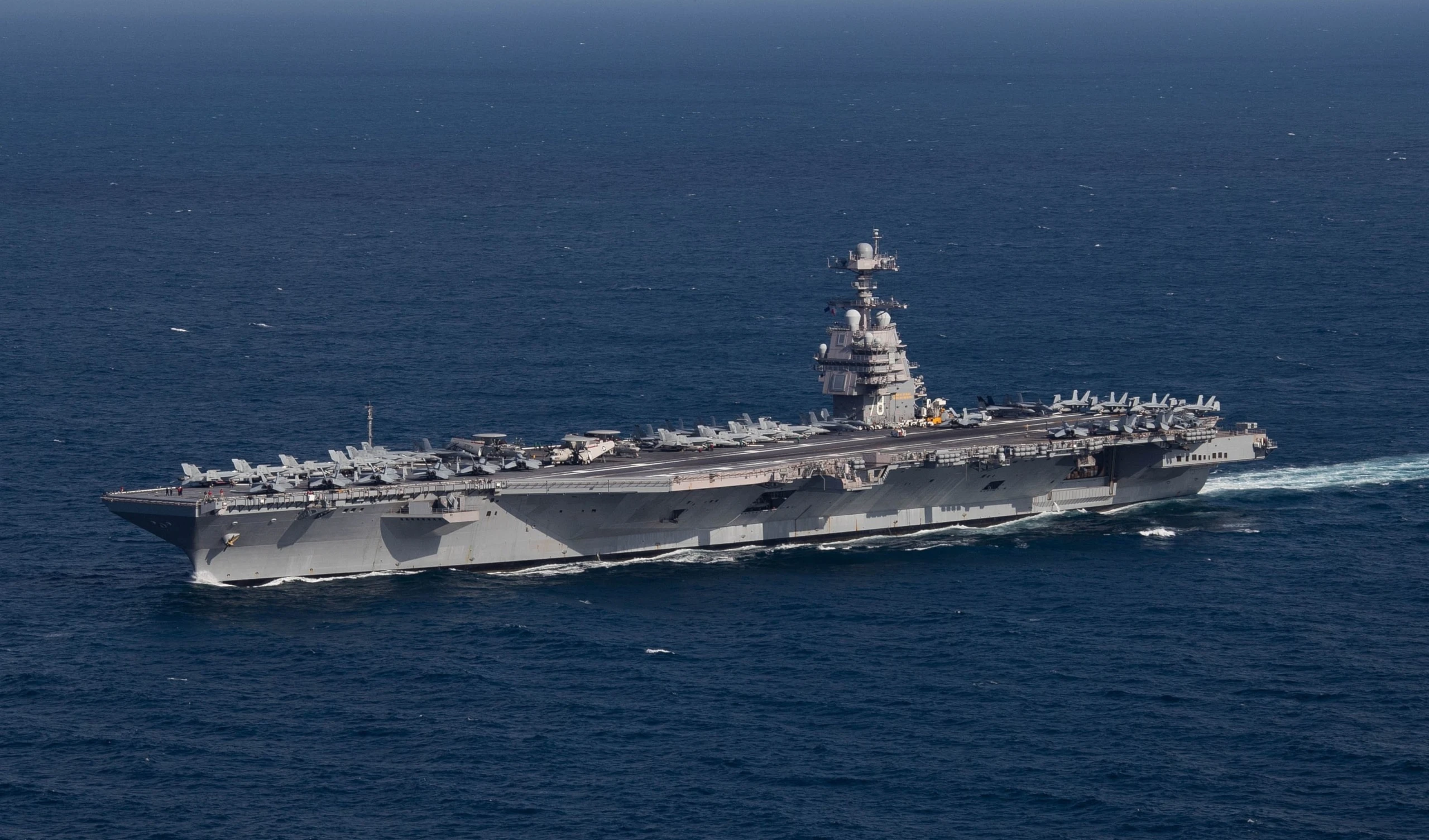China counters US maritime bloc with sanctions on Hanwha Ocean
Chinese sanctions on Hanwha Ocean raise costs for the shipbuilder but may strengthen US-South Korea naval ties under the Masga initiative.
-

Undated photo of Hanwha Ocean’s Goeje Shipyard in South Korea (Hanwha Ocean)
Chinese sanctions on Hanwha Ocean are expected to increase operational costs for the South Korean shipbuilder in the medium term, but analysts say the move may ultimately strengthen US-South Korea shipbuilding cooperation as Washington looks to expand naval capacity.
Last week, China’s Ministry of Commerce announced sanctions on five US-based subsidiaries of Hanwha Ocean, one of South Korea’s largest shipbuilding companies.
The sanctions ban any transactions or cooperation between these entities and Chinese individuals or companies, following allegations that Hanwha had supported a US investigation into Chinese maritime firms and the subsequent imposition of new US port fees.
The targeted subsidiaries include Hanwha Shipping, Hanwha Philly Shipyard, Hanwha Ocean USA International, Hanwha Shipping Holdings, and HS USA Holdings Corp.
Read more: US allies still in the dark on Trump's tariff goals: Politico
Masga initiative and strategic cooperation with Washington
Among the sanctioned entities, Philly Shipyard in Philadelphia has emerged as a key symbol of the Masga initiative, short for “Make American Shipbuilding Great Again.”
Acquired by the Hanwha Group in 2023 for $100 million, the shipyard has been central to a $150 billion shipbuilding cooperation plan between Seoul and Washington aimed at revitalizing the American shipbuilding sector.
South Korean President Lee Jae-myung visited the facility in August to underscore its strategic importance in enhancing naval defense and industrial capacity in cooperation with the United States.
Beijing’s sanctions come in response to Washington’s April decision to impose steep port fees on vessels built, owned, or operated by Chinese entities, citing national security risks under Section 301 of the US Trade Act of 1974. These tariffs went into effect on October 14.
China called the move a violation of international norms and accused Hanwha’s US affiliates of aiding the US investigation.
Read more: US probes China's alleged violation of Phase One Trade Agreement
Projected impact and geopolitical calculations
According to South Korean lawmaker Yu Yong-weon, the sanctions could cost Philly Shipyard up to $60 million in losses over two years, primarily due to supply disruptions and delayed deliveries.
However, analysts say China’s move appears calculated. Bence Nemeth, senior lecturer at King’s College London, told South China Morning Post (SCMP) that by targeting only the US-linked subsidiaries and not Hanwha Ocean's South Korean headquarters, Beijing avoided directly confronting Seoul while still signaling its displeasure.
“It signals pressure on US maritime and defense-industrial capacity and the Seoul-Washington shipbuilding push, while avoiding a direct hit on South Korea,” Nemeth told SCMP.
He added that the most likely impact would be cost inflation and procurement friction, especially where Chinese-origin materials are difficult to replace.
A push towards greater alignment with the US
Troy Stangarone, a fellow at the Carnegie Mellon Institute for Strategy and Technology, said the sanctions reinforce Hanwha's alignment with the United States. He cited previous Chinese pressure tactics, including unofficial sanctions on South Korea over the THAAD missile defense system in 2016, which had a similar rallying effect on US-South Korea cooperation.
“China’s sanctions will only reinforce Hanwha’s cooperation with the United States,” he said, adding that such pressure deepens the need for aligned nations to cooperate in naval and commercial shipbuilding.
Collin Koh, senior fellow at Singapore’s Institute of Defence and Strategic Studies, told SCMP that China’s intention is to deter naval shipbuilding cooperation between US allies, viewing it as a threat to Beijing’s regional dominance. “It’s meant to send a chilling effect among other US allies in the region,” he said.
Read more: Pentagon plans $1bln critical minerals purchase as China tensions rise
China currently dominates global shipbuilding, accounting for 75% of global orders in 2024, compared to 14% for South Korea, according to Clarksons Research. However, in the first half of this year, China's share fell to 56%, while South Korea’s surged to 30%, reflecting shifting alliances and increased investment from partners like the United States.
The US, by contrast, has struggled to maintain its naval production pace. In 2024, American shipyards built only five large merchant vessels, while China’s state-owned shipbuilders delivered more than 250 ships.
Strategic outlook for Hanwha and South Korea
Despite short-term challenges, experts believe Hanwha Ocean stands to gain from closer ties with Washington. The company recently completed maintenance work on the USNS Wally Schirra, its first-ever US Navy project, in South Korea, an indicator of future cooperation.
Nemeth noted that Chinese sanctions on Hanwha Ocean “cut two ways.” On one hand, they introduce geopolitical and supply-chain risks for Korea-US naval projects; on the other, they are likely to tighten alignment between the two allies.
“In the near term, South Korea is expected to adopt a cautious, phased approach, stress-testing exposure, localizing critical components, and pricing in delays,” he said.
Koh concluded that Beijing’s strategy forces Seoul into a choice, and that South Korea will ultimately side with Washington, especially as US naval demand continues to grow.

 5 Min Read
5 Min Read










